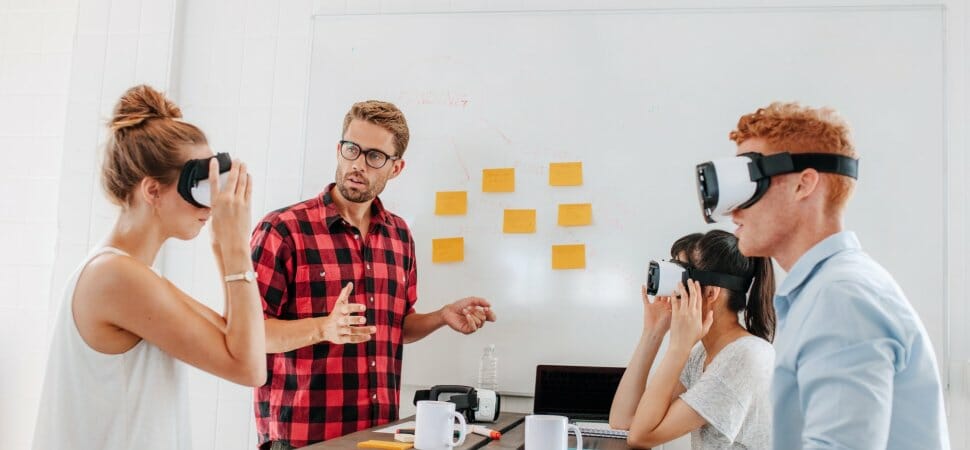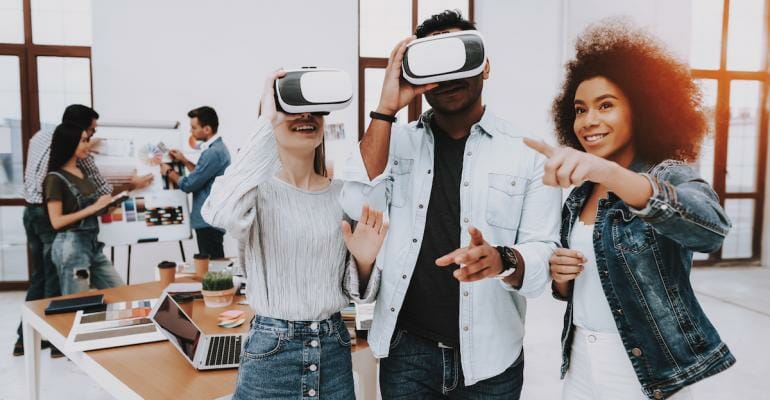With so much innovation going on and pushing further the boundaries of excellence, it’s hard to adopt a particular novelty to your business. How can you choose one and commit to testing and implementing it, when the next is already visible around the corner? Still, if a business does manage to successfully adopt innovative technology in its workplace to become more efficient, it’s really impressive. If it works, it’s a success story to shout to the newspapers and tell the grandchildren about.
Perhaps this is why, when it comes to technical innovation, the one we tend to consider the least is the one meant for managing your business, and particularly for HR. If it cannot fulfill the expectations of clients or boost productivity by 300%, or offer a product so new and edgy to make history, then what’s the point?
But this kind of thinking forgets that what drives the performance of a company to shatter all records is, ultimately, its employees. If you manage to pick, train, motivate and manage them better, your battle for excellence is more than half won. This is why innovation destined for the workplace is gaining momentum in notable companies worldwide, and why we encourage you to consider it as well.
Bring VR training to your organization and start a free trial of Viar360 today!
How Does Virtual Reality Work for Business?
You may think that virtual reality is something that is mostly destined for the gaming industry? Think again. This may have been true at first, but lately, the focus of all virtual reality innovations is shifting more and more onto business applications.
The truth is that like all innovation, some of the virtual reality ideas for business will turn out to be just fads. Any kind of investing carries some degree of risk, and that’s the beauty of the risk and reward balance. Because, on the other hand, it is equally true that the ones who do take a chance and invest in a tech innovation just might hit the jackpot. If you adopt a new method or tool to aid you in your business and if it ends up being adopted by everyone else eventually, you will get a head-start on productivity that will help propel you further ahead.
The good news is that investing in a tech innovation doesn’t have to be a life-or-death decision for your business. Little tools and apps that help bring more value to your processes don’t usually require a huge investment, so even if some of them end up not making a difference, it wouldn’t be a major loss. In one way or another, virtual reality is the future, so it would be wise to get used to it and experiment with as many forms of VR products as possible.

Five Ways You Can Use Virtual Reality for the Workplace
1) Make Recruiting and Screening More Real with Virtual Reality
Talent acquisition is always a cornerstone of success for any business. The job name of ‘headhunter’ may sound funny when you think of it, but it highlights just how crucial securing exceptional employees can be. Making mistakes in recruiting and screening will result in average performance and a lot of time waste until you can part ways with this employee and find another one.
This is one of the chief uses of virtual reality for the workplace: it offers recruiters an environment in which they can assess potential hires much more effectively. But it’s not only about screening, but also about connection: by using VR, both the recruiter and the applicant can get a better sense of whether their values are indeed aligned and compatible.
2) Create Incredible Training Programs for Staff
At first, only NASA used virtual reality to create training sessions for its pilots. It made sense since it was all about fast reflexes and every fraction of a second mattered. Since simulating a spaceflight doesn’t strike us as being that much different from playing a futuristic computer game, NASA’s use of VR made sense. Using VR in education was the next step.
But then, slowly, many companies started using VR training programs for their staff, even though their line of work looked nothing like a space mission. UPS, KFC, and Siemens are only a few examples, and more are following in their footsteps.
Furthermore, by using VR during the training of new hires, you can also help them have much more realistic expectations about the job they will perform. This reduces the time of adjustment and transition to the role, making them to be much more productive in the long run. Plus, it’s fun, so what more could you ask for?
3) Video Interviews may come to life by use of Virtual Reality
People thought video interviewing would live up to its promise but later it was realized that both hiring managers and candidates can lose out on some important interpersonal interactions in video interviews. But, by giving a look at this demo video from Microsoft, it gives clear indication that the concept of virtual reality can actually give the feeling of real-time and very close interpersonal interactions during the video interviews by simulating the real-life environment.
4) Transform Collaboration and Telecommuting into a True Community
There are already plenty of tools that help businesses work with freelancers or even employees located at a distance. Managers tend to be content with conversations over Skype or Slack and think that they make real-time collaboration as real as it can get. But when VR also comes into the equation, the previously inevitable time waste is cut down drastically.
Furthermore, you enable your teams to actually foster a sense of community previously reserved only for a traditional office setting. You could even mix AR (augmented reality) with VR for an incredible blend that will completely transform your workplace collaboration for the better.
5) Help Your Support Staff Connect to Consumers in Real-Time
A huge part of making a business success revolves around finding new ways of stimulating your sales team and enabling it to become more performant. To a huge number of businesses, hacking the formula of sales performance equals more or less to lasting success in their niche.
This is where VR steps in as a game-changer: if you give your sales team (and support staff) a way to really interact with the customers. This will help both your employees find ways to understand how to operate more effectively and what the customers want, and you will also provide your customers with a first-class experience of service.

How to Actually Us It In Your Workplace
This all sounds fine in theory. How can you actually do it, if you’re not an IT firm capable of creating your own custom software solutions? Luckily enough, the field of virtual reality for the workplace isn’t a remote, speculative idea anymore. In the past few years, plenty of third-party services have developed VR solutions specially tailored for enhancing workplace functionality.
6 Companies That Are Offering VR Solutions for the Workplace
- 360 Immersive
This company is selling VR solutions to common workplace issues or tasks. A variety of different applications is also focused on training of employees. There are different apps available for the different types of training and learning covered. This including medical, firefighting, disaster intervention, workplace safety, etc..
- Galivac
This company offers VR solutions for HR tasks (recruiting, employee assessments and more).
- ZeroLight VR
A company selling VR software meant to help automotive companies test and calibrate their products better. ZeroLight is (was) one of the best trending niche services.
- Yeppar
This is a company that offers a wide range of VR solutions. It’s used for making business processes and the workplace more effective.
- Online induction
This company offers VR training learning modules for the workplace. They are viewable not only on various VR headsets but also on regular browsers as well.
- STRIVR Labs
Initially designed to help train football athletes, the company extended its range of applications.
Viar360 is the most intuitive authoring and publishing platform that reduces the time, effort and knowledge required to create highly engaging interactive virtual reality experiences from 360° videos and photos. It’s a great tool to create training simulators.
VR Improves Cognition & Memorability
Edgar Dale built his Cone of Experience theory in 1969 based on the premise that the medium in which training is delivered is key to learning efficiency. We remember 10% of the material we read, 20% of the information we hear, but a staggering 90% of what we do. Researchers in China tested the effects of VR on children’s performance in school. They compared the test results of students that learned about Astrophysics with and without VR. 90% of the students who learned with VR passed their test vs. 40% of students from the other group. Both short-term retention (+27%) and long-term memorability (+32%) improved.
This is the Knowledge-Based Model of VR training. The content is replaced in its spatial context, enhancing cognition. In the classroom, we’re taught through passive learning. In VR, we learn through interactions. It is merely common sense. Subjects like anatomy or cosmology are more easily studied by interacting with 3D models than by deciphering 2D sketches. With virtual reality, companies can now provide continuous expert knowledge-training across their ranks. It helps them create a common, company-wide context, based on continuous learning.



